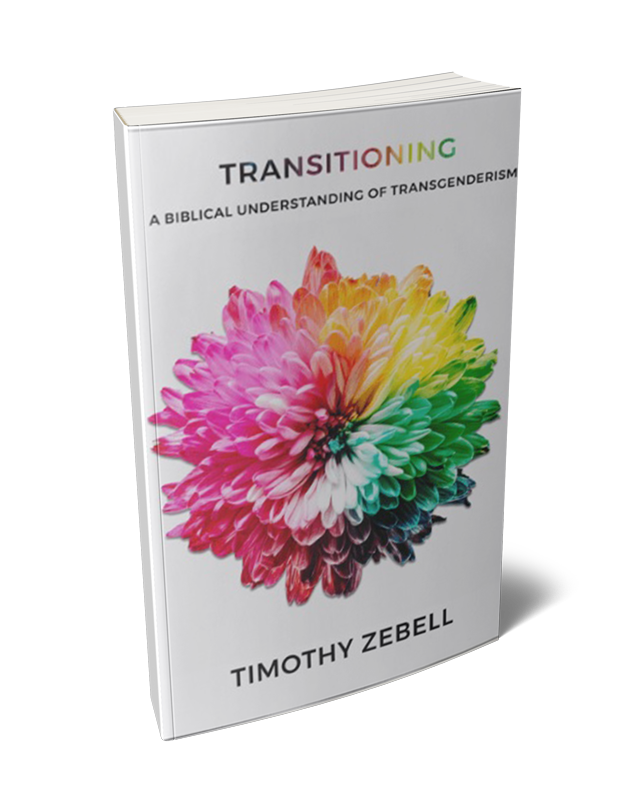“‘Pregnancy and childbirth were very male experiences for me,’ said a 29-year-old respondent in a study reported Friday in Obstetrics and Gynecology. ‘When I birthed my children, I was born into fatherhood.’”[1] This introduction to the NPR article “Transgender Men Who Become Pregnant Face Social, Health Challenges” reveals the complexities inherent in the 21st Century normalization of sex-reassignment procedures. According to the article:
He is one of 41 participants in a study of how it feels to be male and pregnant, a study the authors think may be the first of its kind. … The study came about because a medical student working with Kerns, Alexis Light, found herself fielding questions from transgender male friends about whether they’d be able to conceive and what pregnancy would be like.[2]
Our traditional view of biology and its limitations are undergoing a radical transformation. Science is discovering the key to transforming some of nature’s most fundamental truths. According to a Humanity+ article titled “Total Gender Change within a Decade,” medical technology may “be able to change the gender of anyone to the opposite gender, with full reproductive abilities of the new gender” by the end of the decade.[3] Realistically, this may be overly-optimistic; nevertheless, huge strides are being made in realizing this vision.
For some time now, surgeons have been capable of transforming both male and female external sex organs into their counterparts. These are functional, “Among FTM [female-to-male] individuals who have undergone sex reassignment, orgasm is possible and, in fact, ability to reach orgasm often increases. In addition, satisfaction with the surgery tends to be very high (>80%), and frequency of sexual activity usually increases as well.”[4] Suffice it to say that these procedures are far more advanced and effective than most people might imagine. These are not merely cosmetic adjustments. However, some surprising medical advances have given hope that an individual’s internal sex organs may also be reassigned in the near future.
In 2013 scientists used skin cells to create eggs that were then fertilized and used to develop baby mice. The Scientific American wrote that this study “suggested that men’s skin cells could be used to create eggs, and that sperm could be generated from women’s cells.”[5] This was soon demonstrated to be true when scientists used human skin cells to create primitive sperm cells that were successfully injected into the testes of mice.[6] Additionally, Live Science reports that “Scientists have tricked male fish cells that were destined to become sperm into switching sex and becoming eggs instead.”[7] Perhaps most importantly, Grant Jacobs reports:
In a stunning paper Henriette Uhlenhaut and 14 others show that if adult mice lose a Foxl2 gene, ovaries become testes. … These researchers raised mice in which they could delete the Foxl2 gene by treatment of tamoxifen, a compound that competes to block the estrogen receptor. … The surprising and unexpected result was that when adult mice were induced to lose their Foxl2 gene, their ovaries changed into testes! … This research shows that the ovary has to maintain constant suppression of the key testis development gene Sox9 by Foxl2; if not ovarian granulosa and theca cells change to become testicular Sertoli and Leydig cells, respectively.
Uhlenhaut and colleagues observe that the full set of genes associated with testis development becomes active and these XX (genetically female) mice produce similar amounts of the male sex hormone testosterone as XY (genetically male) mice.[8]
Moreover, stem cell research has afforded the possibility that sex organs might be grown from an individual’s genetic tissue. This could be as simple as using stem cells mixed with a patient’s body fat to grow breasts or to increase mass.[9] More significantly, custom-designed sex organs can be grown in a laboratory and then transplanted into the body. Already this has been successfully accomplished, according to a New York Daily News article titled “Woman with Lab-Grown Vagina Talks about Life-Changing Procedure.” The article reports:
A woman who participated in a ground-breaking study where doctors used cells to grow vaginas in a lab said she now leads a normal life thanks to the surgery. The unidentified patient was one of four Mexican women with Mayer-Rokitansky-Küster-Hauser (MRKH) syndrome, a rare genetic condition that causes the vagina to be absent or underdeveloped.[10]
In February 2016 Cleveland Clinic became the first U.S. medical center to perform a uterus transplant into a woman of reproductive age.[11] The possibility of uterus transplants combined with the ability to grow genetically customized sex organs in a laboratory, and the possibility of manipulating an individual’s genetic makeup to transform ovaries and testes offers promise to those who hope for the possibility of undergoing a complete gender change. Alternatively, the transhumanist community envisions a day when the function of internal sex organs will be replaced with technology, thus allowing transsexuals to focus entirely upon appearance and sexual experience. Here too, scientific advances have made this a realistic future scenario. Science blog io9 reports, “As time passes, we’re inching closer and closer to the day when it will finally become possible to grow a baby entirely outside the human body.”[12] Cornell University’s Hung-Ching Liu has worked toward achieving a tissue-based inner lining of an artificial uterus, and a primitive attempt at developing an artificial placenta has resulted in goats being “kept alive for up to 237 hours in amniotic tanks through a process called extracorporeal membrane oxygenation” (emphasis removed).[13]
“Transhumanism and Transgenderism enjoy a close relationship due to mutual interest in enhancement technology.”[14] Transhumanists George Dvorsky and Dr. James Hughes co-authored a paper titled “Postgenderism: Beyond the Gender Binary.” According this paper’s abstract:
Postgenderism is an extrapolation of ways that technology is eroding the biological, psychological and social role of gender, and an argument for why the erosion of binary gender will be liberatory. Postgenderists argue that gender is an arbitrary and unnecessary limitation on human potential, and foresee the elimination of involuntary biological and psychological gendering in the human species through the application of neurotechnology, biotechnology and reproductive technologies. Postgenderists contend that dyadic gender roles and sexual dimorphisms are generally to the detriment of individuals and society. Assisted reproduction will make it possible for individuals of any sex to reproduce in any combinations they choose, with or without “mothers” and “fathers,” and artificial wombs will make biological wombs unnecessary for reproduction. Greater biological fluidity and psychological androgyny will allow future persons to explore both masculine and feminine aspects of personality. Postgenderists do not call for the end of all gender traits, or universal androgyny, but rather that those traits become a matter of choice. Bodies and personalities in our postgender future will no longer be constrained and circumscribed by gendered traits, but enriched by their use in the palette of diverse self-expression.[15]
Clearly, the questions associated with gender fluidity, sex-reassignment, and sex roles in reproduction span far more territory than how individuals perceive themselves, an individual’s mental health, and social tolerance. The 21st Century’s obsession with sex-reassignment procedures are fundamentally redefining the concept of humanity. As bioethicist Dr. Leon Kass, who formerly served as Chairman of the President’s Council on Bioethics, warns in his book:
Human nature itself lies on the operating table, ready for alteration, for eugenic and neuropsychic “enhancement,” for wholesale redesign. In leading laboratories, academic and industrial, new creators are confidently amassing their powers and quietly honing their skills, while on the street their evangelists are zealously prophesying a posthuman future. For anyone who cares about preserving our humanity, the time has come to pay attention.[16]
He also warns, “All of the boundaries are up for grabs. All of the boundaries that have defined us as human beings.”[17]
Be sure to Read Timothy Zebell’s book Transitioning: A Biblical Understanding of Transgenderism.
Free Downloads
Share...
1. Henig, Robin. “Transgender Men Who Become Pregnant Face Social, Health Challenges.” NPR, November 7, 2014, 3:53 p.m., ET. Accessed June 3, 2016. http://www.npr.org/sections/health-shots/2014/11/07/362269036/transgender-men-who-become-pregnant-face-health-challenges.
2. Henig.
3. Ice, Valkyrie. “Best of H+: Total Gender Change within a Decade.” Humanity+, May 8, 2014. Accessed June 3, 2016. http://hplusmagazine.com/2014/05/08/total-gender-change-within-decade.
4. Lehmiller, Justin. “Sex Question Friday: How Does Female-To-Male Sex Reassignment Surgery Work?” Sex & Psychology Blog, March 7, 2014. Accessed June 3, 2016. http://www.lehmiller.com/blog/2014/3/7/sex-question-friday-can-ftm-sex-reassignment-surgery-yield-a-fully-functional-penis.
5. Cyranoski, David. “Lab-Made Egg and Sperm Precursors Raise Prospect for Infertility Treatment.” Scientific American, August 21, 2013. Accessed June 3, 2016. http://www.scientificamerican.com/article/lab-made-egg-and-sperm-precursors-raise-prospect-for-infertility-treatment.
6. Hewitt, John. “Scientists Turn Skin Cells into Sperm Cells, but Raise Provocative New Questions.” Extreme Tech, May 5, 2014, 4:02 p.m. Accessed June 3, 2016. http://www.extremetech.com/extreme/181746-scientists-turn-skin-cells-into-sperm-cells-but-raise-provocative-new-questions.
7. Than, Ker. “Sperm Cells Turned into Eggs.” Live Science Blog, February 6, 2006. Accessed June 3, 2016. http://www.livescience.com/7006-sperm-cells-turned-eggs.html.
8. Jacobs, Grant. “Deleting a Gene Can Turn an Ovary into a Testis in Adult Mammals.” Sciblogs, January 19, 2010. Accessed June 3, 2016. http://sciblogs.co.nz/code-for-life/2010/01/19/deleting-a-gene-can-turn-an-ovary-into-a-testis-in-adult-mammals.
9. Begley, Sharon. “All Natural: Why Breasts Are the Key to the Future of Regenerative Medicine.” Wired magazine, October 20, 2010, 7:08 p.m. Accessed June 3, 2016. http://www.wired.com/2010/10/ff_futureofbreasts/all/1.
10. Taylor, Victoria. “Woman with Lab-Grown Vagina Talks about Life-Changing Procedure.” Health. New York Daily News, April 19, 2014, 11:45 a.m. Accessed June 3, 2016. http://www.nydailynews.com/life-style/health/woman-lab-grown-vagina-normal-life-article-1.1761999.
11. Cleveland Clinic. “Nation’s 1st Uterus Transplant.” n.d. Accessed June 3, 2016. http://www.clevelandclinic.org/lp/uterus-transplant.
12. Dvorsky, George. “How to Build an Artificial Womb.” io9, April 19, 2013, 2:01 p.m. Accessed June 3, 2016. http://io9.gizmodo.com/how-to-build-an-artificial-womb-476464703.
13. Dvorsky.
14. Pellissier, Hank. “Transgender and Transhuman – The Alliance, the Complaints and the Future.” Institute for Ethics and Emerging Technologies, June 15, 2012. Accessed June 3, 2016. http://ieet.org/index.php/IEET/more/pellissier20120615.
15. Divorsky, “Postgenderism: Beyond the Gender Binary.”
16. Kass, Leon. Life, Liberty and the Defense of Dignity. San Francisco: Encounter Books, 2004.
17. Wesley Smith, “A Conversation with Leon Kass: Science Doesn’t Trump All,” San Francisco Chronicle, October 20, 2002, Source: Smith, Nick. “Stupider and Worse?” University Dialogue, Paper 62, 2010. Accessed March 18, 2014. http://unh.edu/discovery/sites/unh.edu.discovery/files/dialogue/2010/pdf/2010_Dialogues_smith.pdf.
Unless otherwise noted, all Scripture quotations are taken from The Holy Bible, English Standard Version, copyright ©2001 by Crossway Bibles, a publishing ministry of Good News Publishers. Used by permission. All rights reserved.








